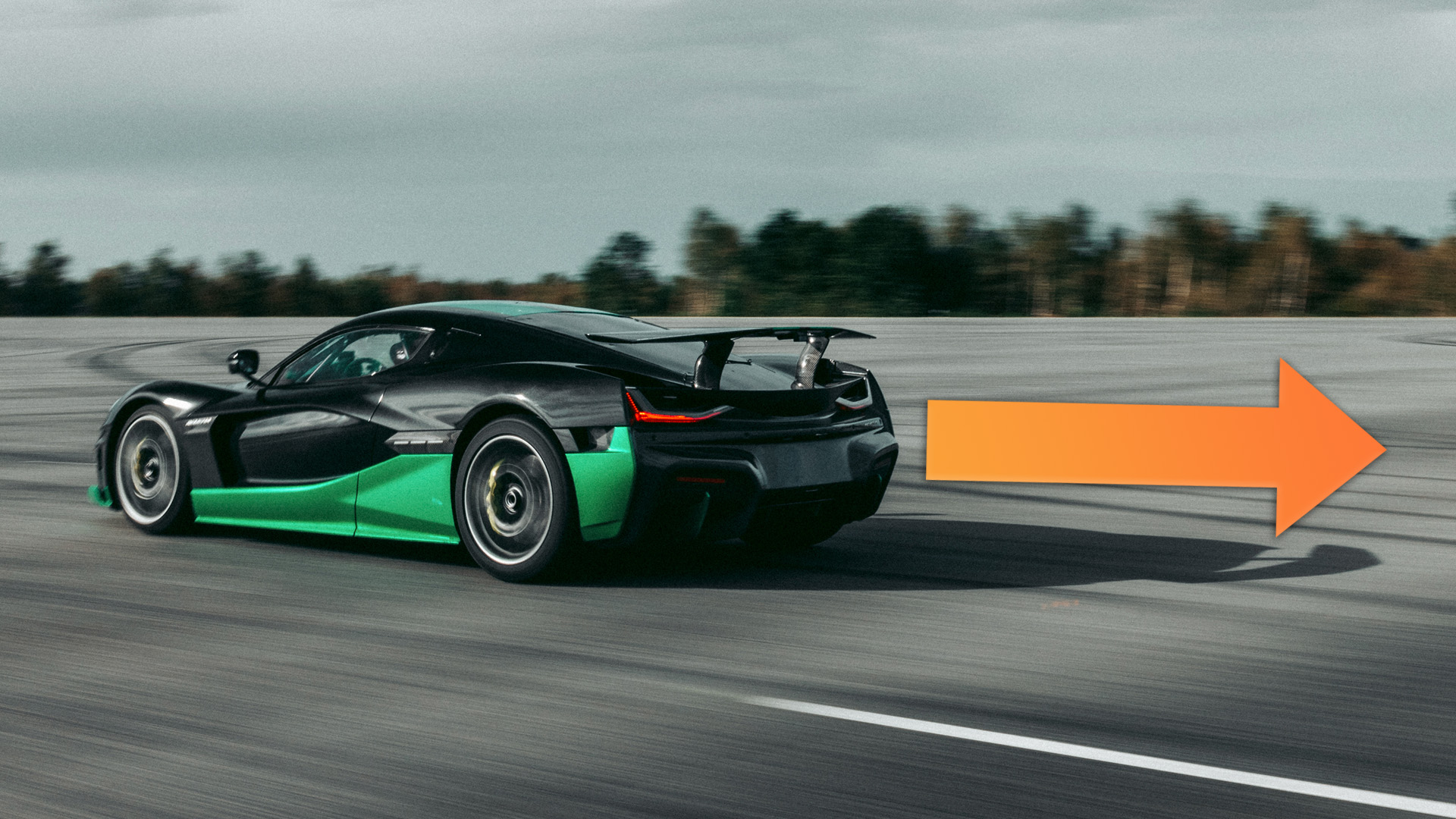

It should be no surprise that the 1,914 hp Rimac Nevera is fast, but just how fast is pretty earth-shattering. It can do a zero-to-60 mph run in just 1.74 seconds and zero-to-100 mph in 3.21 seconds. Those records are so conventional, though. How fast can it go in reverse? Faster than any other car, if that’s any surprise.
The $2.5 million Rimac Nevera just went 171.3 mph backward, which it turns out is a new world record. I wouldn’t want to drive anything so fast that’s effectively limited to rear-wheel steering, but that’s why I’m not Goran Drndak, the driver who recorded the run. He’s the official record holder, with the data verified by DEWEsoft and the record certified by Guinness.

The key to this achievement is that electric cars have no dedicated reverse gear. With a little trickery in the inverter, you can just reverse the motor rotation. That means the car is mechanically capable of going just as fast backward as it can forward. How fun is that?
According to Guinness, the previous record was 102.58 mph held by the 2001 Caterham 7 Fireblade—basically a regular Caterham 7, only powered by a Honda CBR900RR motorcycle engine with an 11,000 RPM redline. The track car was configured so that all six of its forward gears worked in reverse.







Theoretically, many fast EVs could challenge this record. The Porsche Taycan Turbo S or the Lucid Air Sapphire would likely get close. The Taycan even has a second gear, which may come in handy. Whether either automaker is willing to take on Rimac is another story.
In any case, congratulations to Rimac for finding a unique record to break with the Nevera. I suppose it ran out of normal challenges, so it had to think outside the box.
Got a tip or question for the author? You can reach them here: peter@thedrive.com